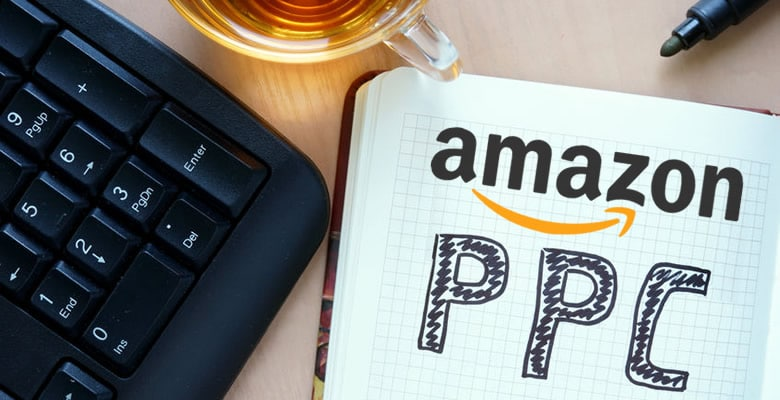Impressions are one of the key metrics of Amazon Ads. So, why are they important? How to improve them? Clear your query with the useful information here.
Any effort you put in your PPC campaign should be directed towards achieving these two goals:
- Increasing its CTR (click-through rate)
- Lowering its CPC (cost-per-click)
When both of these factors are achieved, your ranking will ideally improve to drive conversions at a lower cost.
Adding negative keywords allows you to pick out keywords that can negatively impact click-through rates and sales. However, that is not enough.
When you are looking to attract potential customers and drive conversions quickly, pay-per-click advertising is the best solution for you. When it comes to this, however, many Amazon sellers fear the cost-per-click.
In this in-depth guide, we’ll cover some simple things you can apply to increase your PPC ad views which are suggested by the experts from a renowned PPC company.
Why Do Impressions Matter?
Every Amazon seller desires to put their products in front of as many eyes as possible. So, for instance, during a product launch, you might want to maximize your impressions for as many buyers as possible, which allows you to reach the maximum number of potential customers.
However, more is not always better, and impressions are no exception. In the end, what you really need is to maximize your profits. So, it is essential to strike a balance between advertising budget and sales. To do that, you need to make sure that your products are seen by the valuable leads who are most likely to buy your products.
To target the right audience for your Amazon PPC campaign, it is essential to use the right keywords.
For ẽample, let’s say you sell children’s toothbrushes. This is a fairly specific audience, so you create an ad with the keyword phrase, “toothbrushes for children” hoặc “Children’s toothbrushes.”
After running Ads for half a scale, you realize that this keyword phrase alone is too narrow to generate enough impressions. Hence, you decide to expand your keywords by adding “brushes” and “baby products” as keywords.
Then, however, you run into a worse problem. Too many people are seeing your Ad, but most of them are not interested in your product. So then Amazon decides that your ads are irrelevant and refuses to display them.
High Impressions But No Clicks?
When you get a lot of impressions but no clicks, your ad has a low CTR. That means many customers see your ads but are not interested in them.
Amazon itself has always wanted to drive conversions. As a result, Amazon will restrict such ads by lowering their ratings.
In addition, they will require increasing bids to show your Ads. So, you will only waste your budget more and more on such campaigns.
Even worse, at some point, no matter how high you bid, your ads are still rejected to show. That’s why many sellers complain that their ads aren’t getting enough Impressions despite their very high bids.
How to Increase Your Impressions on Amazon
1. Bid Competitively With Your New Campaigns
In most cases, Amazon sellers start their campaign with a low bid that increases it over time. This is considered a safe solution as you are still collecting and researching data about your campaign and its keywords.
However, many sellers prefer the opposite approach. They use high bids from the start to win visibility for a search term that matches the targeted keyword. They then lower their bids as they collect more data.
However, if you choose to take this approach, it’s essential to continuously monitor your Ads to ensure that you don’t spend your entire ad budget within one day.

2. Combination of Automatic and Manual Targeting
Applying automatic targeting to your campaign will allow you to expand your list of high-performing keywords. Then, by observing which customer search queries generate the most impressions, you can add these keywords to optimize your manual campaigns.
By combining both campaign types, you will soon discover keywords that are likely to drive conversions. On the contrary, for keywords that are underperforming or not related to your product, you should mark them as negative keywords to avoid wasting PPC costs.
3. Apply Keywords in The Product Listing
You should pick out up to five most relevant keywords for your product and place them at the beginning of your title. You must apply them naturally, as most buyers stay away from “spam” listings.
As for the rest of the relevant keywords, apply them in the product description or add them to the “Search Term” fields available to you.
4. Expand Your Keyword Targeting Criteria
Amazon allows you to add 1,000 keywords per campaign. However, it would be unwise to include 1000 keywords in your PPC campaign. Instead, you should start with at least 40 keywords for a new campaign.
Over time, you can expand the reach of your campaigns by adding seasonal, branded, complementary, and competitor keywords related to your products.
Don’t forget to review your keyword reports regularly or use the services of a trusted Amazon agency like Olifant Digital. Their experts will help you match your click-through rate and ACoS to your business goals.

5. Utilize All Three Ad Campaigns
There are three types of Amazon advertising, including:
- Sponsored Products Ads
- Headline Search Ads
- Product Display Ads
If you have access to all of these ads, make sure you advertise on all of them. There’s no denying that they work well together to maximize your product’s visibility on Amazon.
Want to learn more about these three types of ads? Check out this article!
Conclusion
Impressions are an essential factor that Amazon uses to inform you about the success or failure of your campaigns.
In general, knowing how to adjust and optimize your Amazon Ads strategy will be vital to increasing your return on ad spend and your organic ranking in the long run.
Does all of this sound like a nightmare to beginners, right? Don’t worry! Olifant Digital is always ready to help you.

